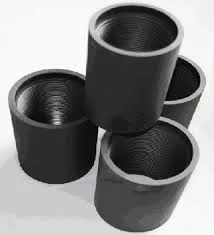- Afrikaans
- Albanian
- Amharic
- Arabic
- Armenian
- Azerbaijani
- Basque
- Belarusian
- Bengali
- Bosnian
- Bulgarian
- Catalan
- Cebuano
- Corsican
- Croatian
- Czech
- Danish
- Dutch
- English
- Esperanto
- Estonian
- Finnish
- French
- Frisian
- Galician
- Georgian
- German
- Greek
- Gujarati
- Haitian Creole
- hausa
- hawaiian
- Hebrew
- Hindi
- Miao
- Hungarian
- Icelandic
- igbo
- Indonesian
- irish
- Italian
- Japanese
- Javanese
- Kannada
- kazakh
- Khmer
- Rwandese
- Korean
- Kurdish
- Kyrgyz
- Lao
- Latin
- Latvian
- Lithuanian
- Luxembourgish
- Macedonian
- Malgashi
- Malay
- Malayalam
- Maltese
- Maori
- Marathi
- Mongolian
- Myanmar
- Nepali
- Norwegian
- Norwegian
- Occitan
- Pashto
- Persian
- Polish
- Portuguese
- Punjabi
- Romanian
- Russian
- Samoan
- Scottish Gaelic
- Serbian
- Sesotho
- Shona
- Sindhi
- Sinhala
- Slovak
- Slovenian
- Somali
- Spanish
- Sundanese
- Swahili
- Swedish
- Tagalog
- Tajik
- Tamil
- Tatar
- Telugu
- Thai
- Turkish
- Turkmen
- Ukrainian
- Urdu
- Uighur
- Uzbek
- Vietnamese
- Welsh
- Bantu
- Yiddish
- Yoruba
- Zulu
Understanding Bull Plug Pressure Ratings for Enhanced Safety and Performance in Industry
Understanding Bull Plug Pressure Ratings
In the realm of fluid dynamics and industrial applications, the components of a system must be carefully selected to ensure efficiency and safety. One such component is the bull plug, which serves a critical role in various fluid systems, including water, gas, and oil pipelines. To ensure the proper functioning of these systems, understanding bull plug pressure ratings is imperative.
What is a Bull Plug?
A bull plug, also known as a blind plug, is a cylindrical fitting used to seal the end of a pipe or a fitting. The primary purpose of a bull plug is to prevent the unintended flow of liquids or gases during maintenance, repair, or when a connection is not needed. These plugs come in various sizes and materials to accommodate different applications and environments.
Importance of Pressure Ratings
Pressure ratings specify the maximum safe pressure that a fitting like a bull plug can handle. This rating is crucial because using a fitting under conditions that exceed its pressure rating can lead to catastrophic failures, including leaks, ruptures, or complete system failure. Therefore, understanding the pressure rating of a bull plug is vital for ensuring the integrity and safety of the entire fluid system.
Factors Influencing Pressure Ratings
Several factors influence the pressure rating of a bull plug
bull plug pressure rating

1. Material Composition Bull plugs are made from different materials such as carbon steel, stainless steel, brass, and plastic. Each material has unique properties that affect its ability to withstand pressure. For instance, stainless steel plugs are typically rated for higher pressures compared to plastic ones due to their enhanced strength and corrosion resistance.
2. Thread Type and Size The size and type of threads on the bull plug also play a crucial role in determining its pressure rating. Larger diameter threads tend to handle greater pressures, while specific thread designs can enhance the sealing capability of the plug, thereby increasing its overall pressure rating.
3. Temperature The operating temperature of the environment where the bull plug is used can affect its pressure rating. Many materials have reduced strength at elevated temperatures, which could compromise the plug's integrity under high-pressure conditions. Consequently, it’s essential to consider both the pressure and temperature ratings when selecting a fitting.
4. Manufacturing Standards Different industries follow specific standards and guidelines (e.g., ANSI, ASME, or API) that dictate the pressure ratings based on the application. It’s critical to select bull plugs that meet these standards to ensure reliability and safety in their intended use.
Selecting the Right Bull Plug
When choosing a bull plug for a particular application, it is essential to assess the intended operational conditions—namely the type of fluid involved, the maximum operating pressure, and the environmental conditions (temperature, corrosive elements, etc.). Consulting the manufacturer's specifications, including detailed pressure ratings and compatibility information, can provide valuable insights and facilitate the selection process.
Conclusion
In conclusion, understanding bull plug pressure ratings is crucial for ensuring the safe and efficient operation of fluid systems. By considering factors such as material composition, thread type, operating temperature, and relevant manufacturing standards, professionals can select the appropriate bull plugs that meet the demands of their specific applications. Safety, reliability, and performance hinge on these critical decisions, underscoring the significance of being knowledgeable about pressure ratings in industrial settings. As industries continue to evolve, the importance of such components and their ratings will remain integral to the infrastructure that supports our modern world.
-
Tubing Pup Joints: Essential Components for Oil and Gas OperationsNewsJul.10,2025
-
Pup Joints: Essential Components for Reliable Drilling OperationsNewsJul.10,2025
-
Pipe Couplings: Connecting Your World EfficientlyNewsJul.10,2025
-
Mastering Oilfield Operations with Quality Tubing and CasingNewsJul.10,2025
-
High-Quality Casing Couplings for Every NeedNewsJul.10,2025
-
Boost Your Drilling Efficiency with Premium Crossover Tools & Seating NipplesNewsJul.10,2025







